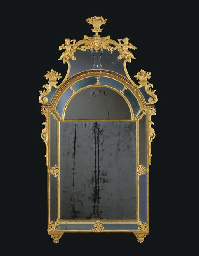The most powerful nation in the Baltic area was Sweden By 1660, under Charles XI, it had reached the height of its power.
Influences
Styles of furniture varied from one part of Germany to another, this was because each principality had its own court. The Bavarian Electors built the Residenz in Munich with a style and a luxury that made King Gustav Adolf of Sweden jealous.
Following an exile in Brussels, Elector Max II Emanuel (1680-1724) returned to Bavaria with very expensive Antwerp handmade furniture. During his second exile, in France, he became familiar with the French Baroque and sent Bavarian craftsmen to France to study, who bought the style back home.
In Germany, by the beginning of the 18th century, the heavy opulent Baroque style was making way for the curvaceous Rococo forms that reached their creative high point in church and castle interiors. Partly due to the guild system, the German cities were a little behind in development, generally taking the lead from the masterpieces.
Princely Cabinets
In 1631, the city of Augsburg sent an ebony cabinet decorated with precious materials to the King of Sweden as a piece offering. Augsburg was the stronghold of, now antique furniture design, and such a large number of intarsia cabinets were imported to Spain that in1603 King Philip III introduced a ban on the importation of Augsburg goods.
Curiosity cabinets, embellished with very fine inlays of ivory, silver, amber and precious stones, or with coloured engravings and porcelain plaques were sought by noblemen and emulated throughout Europe. Augsburg also produced opulent embossed and engraved silver fitted and non fitted furniture for the export markets.
Travel Cabinet
This ebony cabinet from Southern Germany is decorated with ivory inlay. The small front opens to reveal many small drawers flanking a second section with a lockable door.
All of the surfaces are decorated with ivory foliate inlay, and the case stands on flat ball feet.

Swedish Gilded Mirror Frame
This gilt bronze frame, attributed to Burchard Precht. The bevelled rectangular plate with arched cresting within a conforming slip-mounted frame cast with egg-and-dart and pendant flowers, shells and rocaille, the scalloped crest surmounted by a mask flanked by frolicking putti beneath central flower basket, cresting plates replaced, the left putto to top replaced in carved wood, regilt.

No comments:
Post a Comment